How to Properly Care for and Maintain Your Aquarium Plants
Contents
- 1 Tips for Keeping Your Aquarium Plants Healthy and Beautiful
Tips for Keeping Your Aquarium Plants Healthy and Beautiful
Aquarium plants can transform any fish tank into an eye-catching, bright underwater landscape. They provide an aesthetically beautiful backdrop while also improving the general health of your aquarium. Aquarium plants must be properly cared for and maintained to live long and thrive. This comprehensive guide will give you all you need to know about keeping your aquarium plants healthy.
Understanding the Importance of Aquarium Plants
Before getting into the complexities of caring for aquarium plants, it is critical to understand why they are such a beneficial addition to your fish tank. Here are some reasons why aquarium plants are essential:
Oxygen Production: The photosynthesis of aquarium plants releases oxygen into the air, which improves the water quality for fish and other marine life.
– Waste Absorption: Plants help to absorb excess nutrients, waste, and pollutants like ammonia, nitrates, and phosphates from water, lowering the danger of imbalances and maintaining water quality.
– Natural Habitat: Aquarium plants provide refuge and hiding places for your fish, lowering stress and improving their overall health.
– Algae Control: A well-planted tank inhibits excessive algae growth by competing for nutrients and blocking excess light.
Understanding these benefits will inspire you to create the finest maintenance routine for your aquarium plants.
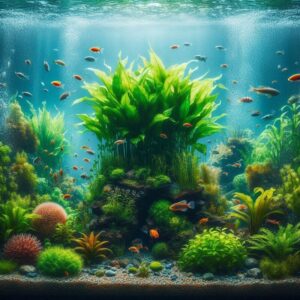
Choosing the Right Aquarium Plants
Choosing the right plants for your aquarium is critical to its success. Several variables must be considered.
Light Requirements: Plants have different light requirements, classified as low, medium, and high. Understanding the lighting requirements of your chosen plants will allow you to offer the necessary illumination. Tank Size: Consider your aquarium’s size and dimensions. Some plants may require taller or larger tanks, but others flourish in smaller settings. Water Parameters: Certain plants prefer specific water conditions, such as temperature, pH, and hardness. Check the preferred parameters of your chosen plants to confirm they are compatible with your tank conditions.
Plants can grow slowly, moderately, or quickly. Choose one that suits your tastes and is easy to maintain.
Java Fern, Anubias, Amazon Sword, and Cryptocoryne are among the most widely suggested aquarium plants for beginners.
Creating a Suitable Environment for Your Aquarium Plants
Once you’ve decided on the aquarium plants that best suit your needs, it’s time to give them an appropriate atmosphere. Here’s how to establish an optimum environment for your plants:
Proper lighting is not just a luxury; it’s a necessity for the growth of your aquarium plants. Whether you opt for fluorescent, LED, or specialised plant lights, choosing the right spectrum and intensity for your chosen plants is crucial. This will ensure they receive the light they need to photosynthesise and grow. Remember to underestimate the power of light in your aquarium ecosystem.
Water Circulation: Proper water circulation is essential for aquarium plants’ overall health and growth. Ensure filtration systems and water pumps are placed so nutrients flow and are appropriately distributed.
CO2 Injection: Carbon dioxide (CO2) injection is optional but extremely useful, particularly in high-light planted tanks. CO2 promotes robust plant development and prevents algae outbreaks. Several CO2 injection methods, including DIY yeast-based systems and pressurised CO2 setups, are available.
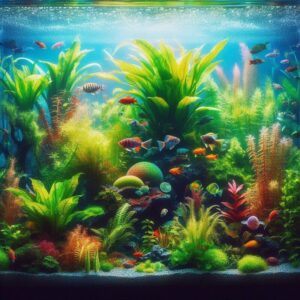
Maintaining Optimal Water Quality
The well-being of your aquarium plants depends on your diligent attention to water quality. Poor water quality can stunt plant growth and render plants vulnerable to various diseases. Here are some crucial points to consider:
Perform regular water changes to remove pollutants, extra nutrients, and contaminants. Ten to twenty per cent of the tank’s volume should be changed weekly.
Water Parameters: The stability and balance of water parameters are crucial for the health of your plants. Maintaining the recommended range for your plants’ needs is essential. Regular testing for pH, ammonia, nitrites, and nitrates is a proactive step towards a healthy aquatic environment for your plants.
Fertilisation: Certain plants may require additional fertilisation to thrive. Liquid fertilisers or root tabs can provide nitrogen, potassium, and phosphorus.
Algae Control: Proper plant care helps to control algae growth. Decaying or dying leaves should be removed soon to avoid excess nutrients and algae problems. Introduce algae-eating fish or prawns to help keep algae under check.
Pruning and Propagation Techniques
Aquarium plants require regular trimming and propagation to ensure good development and prevent overcrowding. Here are some pointers to bear in mind:
Trimming: It’s not just about removing dead or decaying leaves; it’s about managing the size and shape of your plants. This promotes bushier growth and keeps surrounding plants from being shaded, a key responsibility in plant care.
Many aquarium plants are easily propagated through division, stem cuttings, or runners. Investigate the propagation methods for your plant species to enlarge your collection or replant overgrown plants.
Plant placement: Consider their growth tendencies when arranging the plants in your tank. Leave enough space between plants to allow for growth and avoid overcrowding.
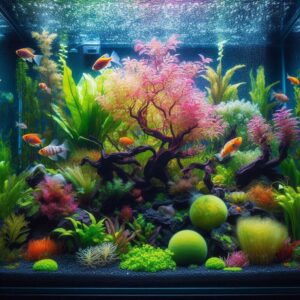
Troubleshooting Common Issues
You may need help caring for your aquarium plants despite your best efforts. Here are a few common problems and solutions:
Yellowing leaves can indicate a food deficit, insufficient illumination, or poor water quality. Adjust the fertiliser, lighting, and watering conditions accordingly.
Algae Overgrowth: If algae overgrow your aquarium plants, check the lighting duration and intensity, water parameters, and fertiliser levels. Adjust these parameters accordingly, and consider introducing algae-eating fish or invertebrates.
Melting Plants: Sudden plant melting frequently indicates insufficient acclimatisation, improper water conditions, or incompatible tankmates. Improve water quality and ensure compatibility with other occupants.
Pests and Diseases: Look for snails, aphids, and fungal infections. Quarantine and treat afflicted plants with aquarium-safe medicines, or seek professional assistance.
Most Popular Questions and Answers
How often should I fertilize my aquarium plants?
The frequency of fertilization depends on the nutrient requirements of your plants. While some plants may require regular fertilization, others can thrive with minimal supplementation. Monitor the growth and appearance of your plants to determine the required frequency.
Can I use regular soil for my aquarium plants?
Regular garden soil may contain additives or fertilizers that can harm your aquarium plants and impact water quality. It is best to use specialized aquatic soil or substrates specifically designed for aquarium use.
Do all aquarium plants require CO2 injection?
Not all aquarium plants require CO2 injection. Low- to moderate-light plants generally do well without additional CO2 supplementation. However, CO2 injection can significantly enhance growth and prevent algae outbreaks for high-light plants or demanding species.
Can I use tap water for my aquarium plants?
Tap water can be used for aquarium plants, but it is essential to remove chlorine and other harmful compounds. Treat tap water with a quality water conditioner, or let it sit for 24 hours before adding it to your aquarium.
How can I prevent algae growth in my aquarium plants?
Proper lighting, nutrient balance, and regular plant maintenance can help prevent excessive algae growth. Introducing algae-eating fish or invertebrates can also help keep algae under control.
Now, armed with the knowledge of how to care for and maintain your aquarium plants, you can create a stunning aquatic oasis that enhances the beauty of your fish tank and provides a healthy environment for your aquatic inhabitants. Your aquarium plants will flourish with proper care and attention, creating a captivating underwater landscape for years.
References
The Ultimate Care Guide For Betta Fish. https://aquaticbuddy.com/betta-fish/care/
Aquarium Thriving: Pro Tips For Long-Term Success. https://ourmarinespecies.com
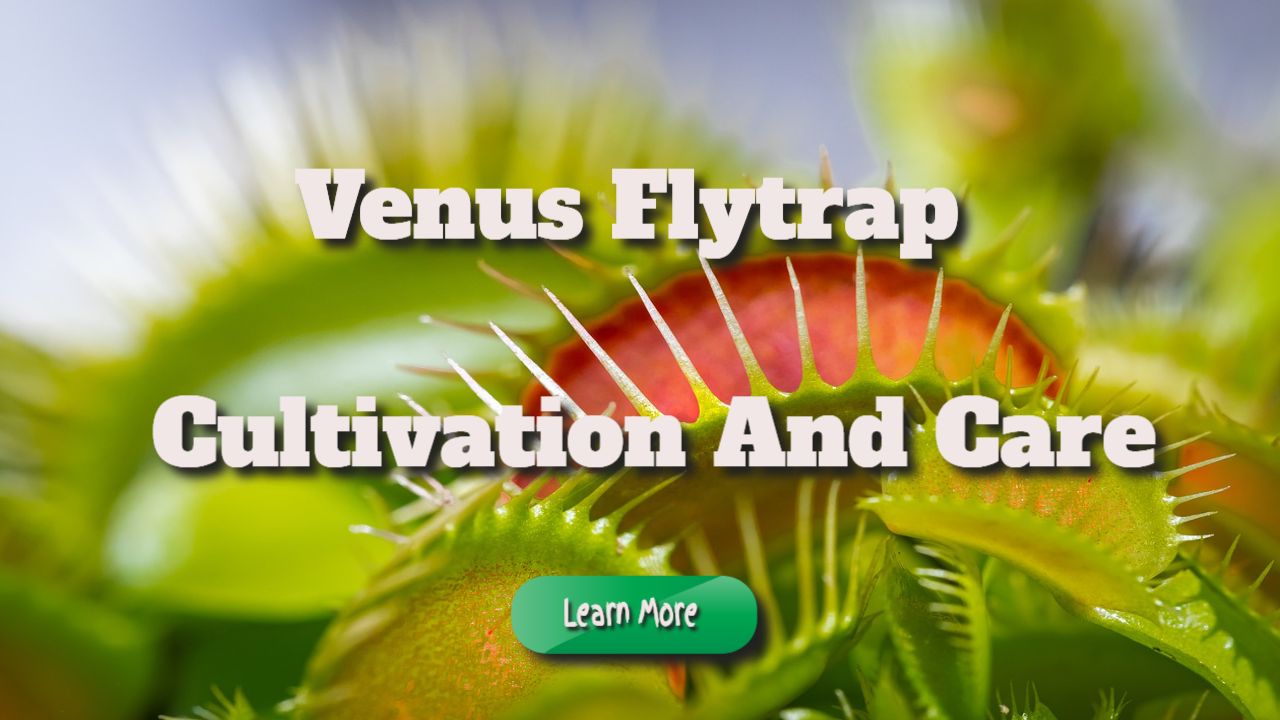
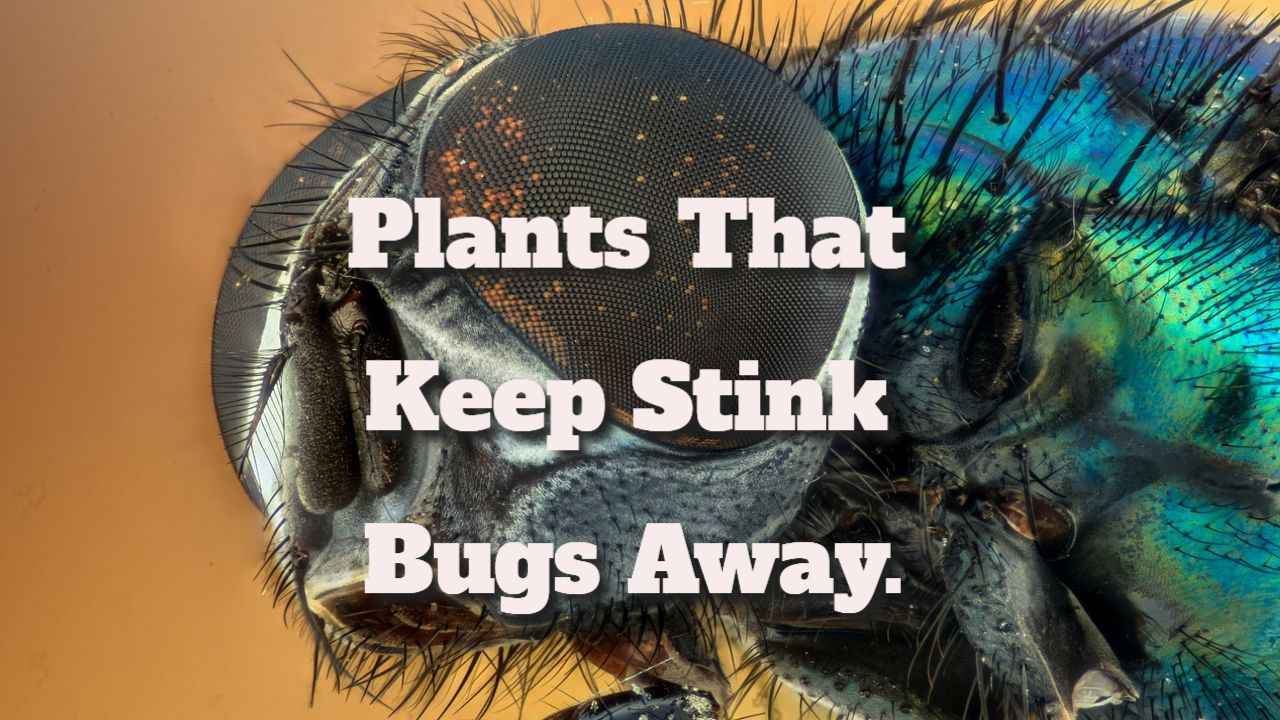
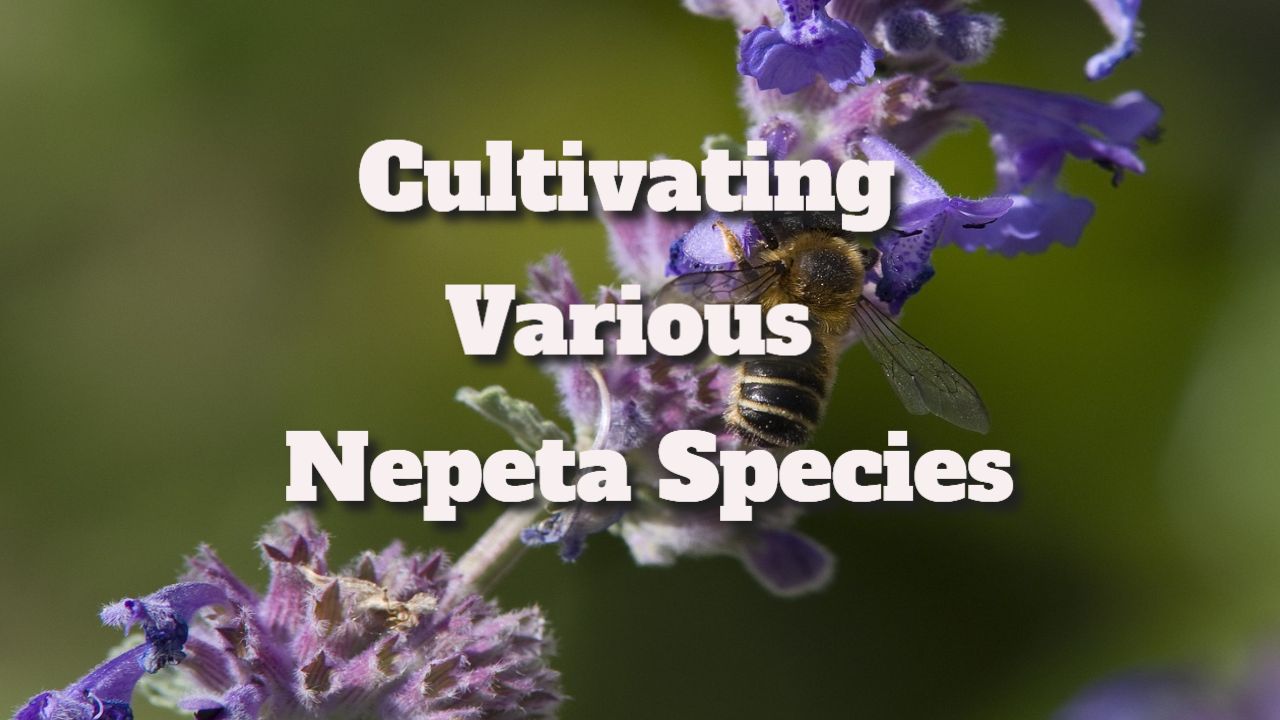
Thank you for this helpful guide! I really appreciated the clear advice on choosing the right plants and ensuring proper lighting and water conditions. The section on troubleshooting common issues like algae growth and yellowing leaves was especially useful. It’s a great balance of practical tips and easy-to-understand info for keeping aquarium plants healthy and beautiful. Thanks again for sharing!
I’m glad to hear you found the guide helpful. Choosing the right plants can be daunting at first, but once you find a few that thrive in your setup, it can really transform your aquarium. It’s all about creating that balance, isn’t it?
I’m really glad to hear that the guide resonated with you. Finding the right balance of plants, light, and water conditions can feel overwhelming at first, but it sounds like you’re getting the hang of it. When it comes to troubleshooting things like algae growth and yellowing leaves, it can often feel like a bit of a puzzle, and it’s reassuring to know that the section on those issues was helpful for you.
It’s reassuring to hear that you found the guide helpful in navigating those tricky aspects of plant care. Many of us have been there, feeling like we’re piecing together a complex jigsaw puzzle. Balancing plants with their specific light and water requirements isn’t just about following guidelines; it’s really about tuning in to what each of our plants needs.
I completely resonate with that feeling of piecing together a complex jigsaw puzzle when it comes to plant care. It’s fascinating how much attention and intuition we can cultivate as we learn about our plants’ unique preferences. I’ve found that keeping a journal helps. I jot down notes on how each plant responds to changes in its environment, which has made it easier to adapt my care routine over time.
It’s great to hear you’ve got a jigsaw puzzle approach to your plants—I can relate. It’s almost like being a detective, uncovering the clues to keep each green buddy happy. I totally get the joy of tuning into their quirks. One day, it’s a little bit of sun; the next, they’re giving you the side-eye if you leave them in the dark too long.
I completely resonate with that detective vibe—it’s like each plant has its own personality and set of needs. I’ve noticed that some of my plants really thrive on a routine, while others seem to like a bit of unpredictability. Just the other day, I neglected one of my succulents for a bit too long, and you could almost hear it sigh in disappointment when I finally brought it back into sunlight. It’s funny how they can express their needs so clearly, even without words.
I really appreciate your thoughts on the guide. It’s interesting how the process of plant care can feel like this intricate puzzle, isn’t it? I remember when I first started out, I was overwhelmed by the sheer amount of information and the specific needs of different plants. It really is about finding that balance, and once you do, it transforms the experience from a chore into something enjoyable.
It’s great to see your progress with your plants; if you’re thinking about adding catnip to the mix, I recently came across some helpful insights on the space it needs to thrive indoors.
‘How Much Room Is Required To Grow Catnip Indoors?’
https://unitypets.com/how-much-room-is-required-to-grow-catnip-indoors/.
Your reflection really resonates with me. It’s fascinating how starting out can feel like stepping into a maze, where every turn brings a new piece of information about plant care. Each plant does seem to have its own unique requirements, and figuring them out can feel overwhelming at first. It often takes some trial and error before you find that right balance, but once you do, it becomes such a rewarding experience. It can also be quite calming, almost meditative, to tend to nature in our own spaces.
I’m glad to hear that you found the guide useful! Choosing the right plants can really change the dynamic of an aquarium, and it’s nice to know you appreciated those tips on lighting and water conditions.
I completely agree with you about the impact of plant choices in an aquarium. It’s fascinating how the right combination can create such a vibrant ecosystem, not just visually but also in terms of water quality and the well-being of the fish. I’ve found that certain plants not only enhance the aesthetic but also serve as natural filters, helping to maintain a healthier environment.
It’s great to hear your perspective. The way plants interact with the rest of the aquarium really does shape the entire environment. It’s interesting how specific species can take on roles beyond just looking good—like those that absorb excess nutrients or provide hiding spots for fish. Have you experimented with various types yourself? I’ve found that fast-growing plants can be especially effective at keeping algae in check, which can be a game-changer in maintaining water quality. Also, some plants release beneficial compounds that can help keep the fish healthy. It’s like crafting a little ecosystem where every choice matters. What species have you had the most success with?
I’m glad to hear you found the guide helpful! Choosing the right plants can really make a difference in creating a vibrant aquarium. It’s all about finding that sweet spot with light and water, isn’t it?
I’m really glad to hear that you found the guide helpful! Choosing the right plants can definitely be a bit of a puzzle, especially with the varying lighting and water needs. I totally agree that that part of the process can feel overwhelming at times. It’s fascinating how each species of plant brings its own unique character to the aquarium, almost like creating a little underwater ecosystem.
I really appreciate your perspective on the process of choosing plants. It’s true that it can feel like a puzzle at times. Each plant not only has its own requirements but also contributes something special to the tank’s overall vibe. It’s almost like crafting a community where every species plays its role, shaping the atmosphere and balance of that underwater environment.
It’s great to connect with someone who shares an appreciation for the intricacies of aquarium gardening. You’re spot on about how choosing the right plants can feel overwhelming; I remember when I first started out, it was like trying to solve a complex puzzle without all the pieces. Each plant not only has its own care requirements but also a distinct personality that adds depth to the overall setup.
I totally get where you’re coming from. Diving into aquarium gardening can feel like stepping into a whole new universe. It’s interesting how you describe it as a complex puzzle; I think that’s a pretty fitting comparison. Each plant does bring its own set of quirks, and the way they interact with one another can really shape the vibe of the whole tank.
I’m glad you found the guide helpful! Choosing the right plants can really set the tone for your aquarium, and you’re spot on about the importance of proper lighting and water conditions. It’s interesting how something as simple as light spectrum can drastically affect plant health. Have you experimented with different types of lighting yet?
What an insightful exploration of the crucial role aquarium plants play! I’ve always been fascinated by the dynamic interplay between flora and fauna in aquaria. Your emphasis on oxygen production and waste absorption really highlights the symbiotic relationship between plants and the aquatic life they support.
It’s great to hear that you share a fascination with the dynamics of aquarium ecosystems. When you think about it, the interaction between plants and animals in an aquarium is like a miniature world unto itself. Each element, from the smallest fish to the tallest plant, plays a role that affects the whole environment.
Your appreciation for the relationship between plants and aquatic life really resonates with me. It’s fascinating to watch how everything in an aquarium works together. The way fish interact with their environment, the way plants filter and purify the water—it’s like a miniature ecosystem in action.
I really appreciate the insights you’ve shared about the significance of aquarium plants! It’s fascinating how they not only elevate the visual appeal of our tanks but also contribute positively to the ecosystem within. I remember when I first set up my aquarium, I was primarily focused on the fish and overlooked the crucial role plants play in creating a balanced environment. It wasn’t until I added some lush Java ferns and Anubias that I truly recognized the difference they made, not just in terms of aesthetics but in the overall health of my aquatic life.
It’s great to hear that you’ve had such a positive experience with your aquarium plants! Java ferns and Anubias are excellent choices; they really know how to thrive in various conditions while providing shelter and a food source for fish.
It’s great to hear that you had a transformative experience with your aquarium plants. You’re spot on about how adding something like Java ferns and Anubias can shift the entire dynamic of a tank. Those plants really do create more than just a beautiful backdrop; they help with water quality and provide necessary hiding spots for fish, making them feel more secure.